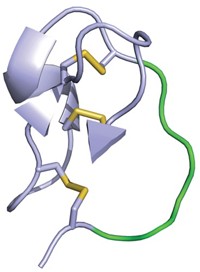Advertisement
Grab your lab coat. Let's get started
Welcome!
Welcome!
Create an account below to get 6 C&EN articles per month, receive newsletters and more - all free.
It seems this is your first time logging in online. Please enter the following information to continue.
As an ACS member you automatically get access to this site. All we need is few more details to create your reading experience.
Not you? Sign in with a different account.
Not you? Sign in with a different account.
ERROR 1
ERROR 1
ERROR 2
ERROR 2
ERROR 2
ERROR 2
ERROR 2
Password and Confirm password must match.
If you have an ACS member number, please enter it here so we can link this account to your membership. (optional)
ERROR 2
ACS values your privacy. By submitting your information, you are gaining access to C&EN and subscribing to our weekly newsletter. We use the information you provide to make your reading experience better, and we will never sell your data to third party members.
Biological Chemistry
Mass Spec Sequences Venom Peptides
A new mass spectrometry strategy makes it easier to sequence venom peptides, a diverse set of disulfide-rich natural products that are difficult to characterize
by Celia Henry Arnaud
April 13, 2009
| A version of this story appeared in
Volume 87, Issue 15
A new mass spectrometry strategy makes it easier to sequence venom peptides, a diverse set of disulfide-rich natural products that are difficult to characterize. For example, the approximately 500 species of cone snails produce more than 50,000 peptide toxins. But researchers have characterized only a fraction of those peptides, which block ion channels and have potential as drugs. No cone snail genomes have been sequenced, so the peptides must be sequenced from scratch without the guidance of DNA databases. Brian T. Chait of Rockefeller University and coworkers sequence cone snail venom peptides by combining electron transfer dissociation (ETD), a type of mass spectrometric fragmentation technique, with chemical derivatization of cysteines to form dimethylated lysine analogs (Proc. Natl. Acad. Sci. USA, DOI: 10.1073/pnas.0900745106). Such derivatization increases the charge state of the peptides and improves the peptide sequence coverage because ETD works better with ions that have higher charge states. Using this strategy, the researchers obtained full sequences for 31 peptide toxins with only 7% of the crude venom from a single cone snail.



Join the conversation
Contact the reporter
Submit a Letter to the Editor for publication
Engage with us on Twitter